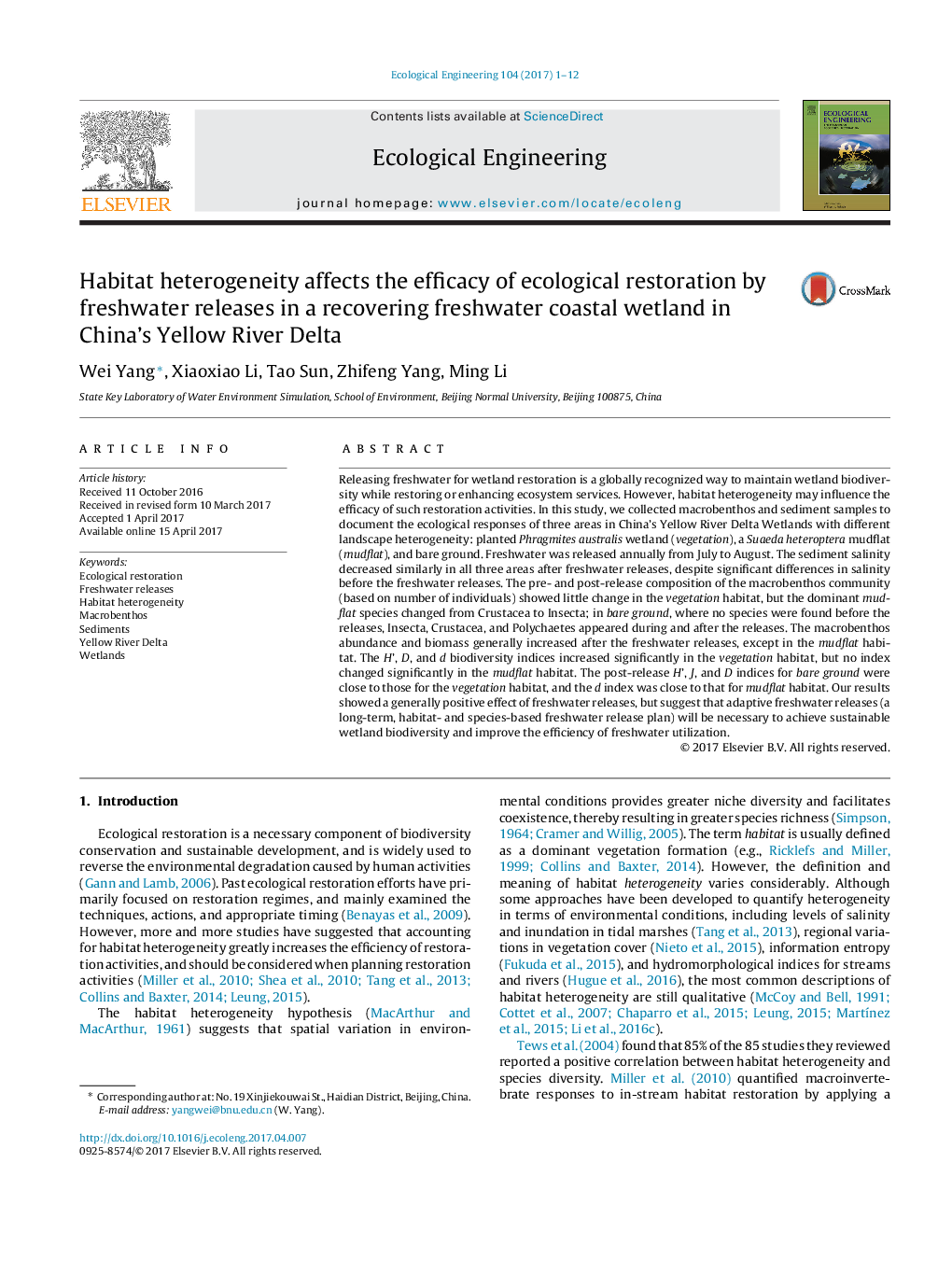| کد مقاله | کد نشریه | سال انتشار | مقاله انگلیسی | نسخه تمام متن |
|---|---|---|---|---|
| 5743940 | 1412325 | 2017 | 12 صفحه PDF | دانلود رایگان |
- Freshwater releases reduced sediment salinity despite differences among habitats.
- They also increased sediment water content and pH, but decreased organic carbon.
- Macrobenthos community responses were, in order, bare land > vegetation > mudflat.
- Faunal diversity only increased in the vegetation and bare land habitats.
- Long-term, habitat-based freshwater releases are needed to improve freshwater use.
Releasing freshwater for wetland restoration is a globally recognized way to maintain wetland biodiversity while restoring or enhancing ecosystem services. However, habitat heterogeneity may influence the efficacy of such restoration activities. In this study, we collected macrobenthos and sediment samples to document the ecological responses of three areas in China's Yellow River Delta Wetlands with different landscape heterogeneity: planted Phragmites australis wetland (vegetation), a Suaeda heteroptera mudflat (mudflat), and bare ground. Freshwater was released annually from July to August. The sediment salinity decreased similarly in all three areas after freshwater releases, despite significant differences in salinity before the freshwater releases. The pre- and post-release composition of the macrobenthos community (based on number of individuals) showed little change in the vegetation habitat, but the dominant mudflat species changed from Crustacea to Insecta; in bare ground, where no species were found before the releases, Insecta, Crustacea, and Polychaetes appeared during and after the releases. The macrobenthos abundance and biomass generally increased after the freshwater releases, except in the mudflat habitat. The H', D, and d biodiversity indices increased significantly in the vegetation habitat, but no index changed significantly in the mudflat habitat. The post-release H', J, and D indices for bare ground were close to those for the vegetation habitat, and the d index was close to that for mudflat habitat. Our results showed a generally positive effect of freshwater releases, but suggest that adaptive freshwater releases (a long-term, habitat- and species-based freshwater release plan) will be necessary to achieve sustainable wetland biodiversity and improve the efficiency of freshwater utilization.
Journal: Ecological Engineering - Volume 104, Part A, July 2017, Pages 1-12
